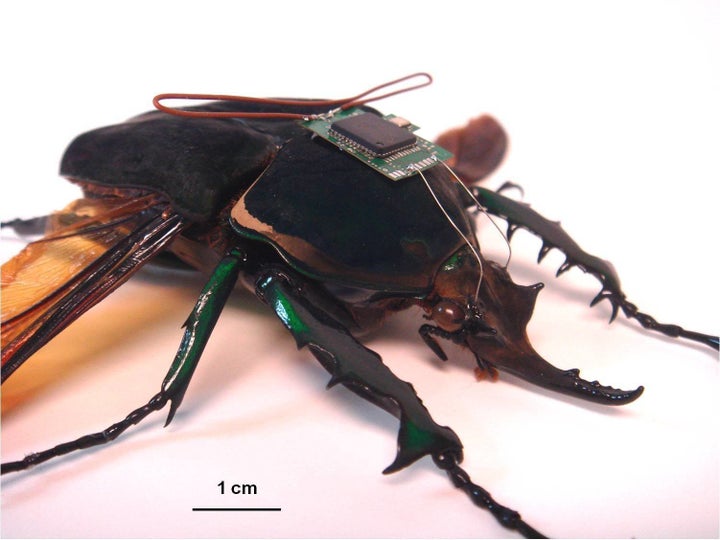
Some call them robobugs, others insect cyborgs. No matter what, scientists have been pushing hard to outfit bugs with tiny electronic sensors--saying these insect-machine mash-ups could prove invaluable in applications ranging from search-and-rescue to espionage.
A new paper, published by researchers at Case Western Reserve University in the Journal of the American Chemistry Society, suggests that researchers are a step closer to solving an critical problem that has stymied development of these so-called remote-control insect systems: finding a reliable power source for the bug-borne sensors.
Batteries installed on insects's backs can't deliver enough power to support planned reconnaissance and first-response missions, so researchers have been hard at work to generate energy from the bugs themselves. Researchers at the University of Michigan are developing techniques to harness the movement and body heat of cockroaches, and the Case Western study promises to take additional power from the insects' very body chemistry.
The technique works by introducing a series of enzymes to break down complex molecules that the cockroach produces when it eats, and oxidizing the resulting sugars to release electrons; these are then run through a fuel cell to create electricity.
This means that power can be produced without the insect needing to be in motion, and researchers are optimistic about the applications for such a technology. Daniel Scherson, chemistry professor at Case Western Reserve and senior author of the paper, told PhysOrg: "It's possible the system could be used intermittently...An insect equipped with a sensor could measure the amount of noxious gas in a room, broadcast the finding, shut down and recharge for an hour, then take a new measurement and broadcast again."
Besides HI-MEMS, DARPA has looked into remotely controlling other animals, notably sharks, but insects are thought to be particularly versatile for their small size, simple biology and ability to fly.
The New Scientist video below, from 2008, demonstrates moths and June beetles being controlled with various degrees of precision. They're not quite spies or disaster-responders yet, but with technologies such as that described in the Case Western paper, that change soon.